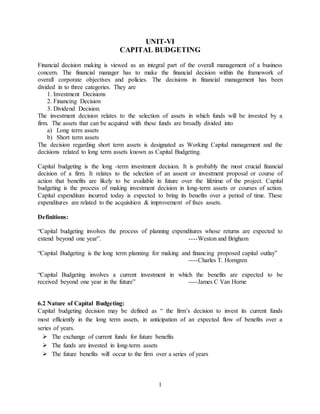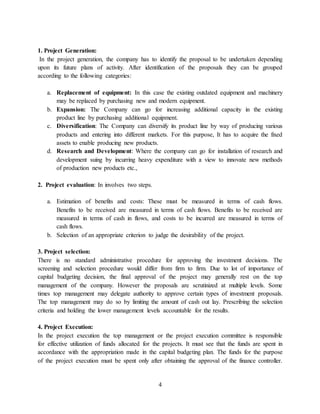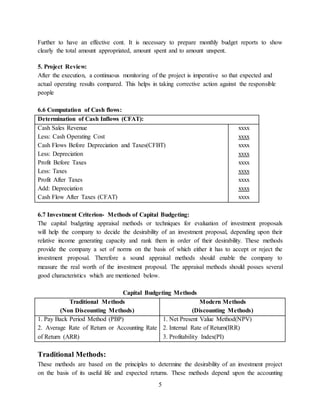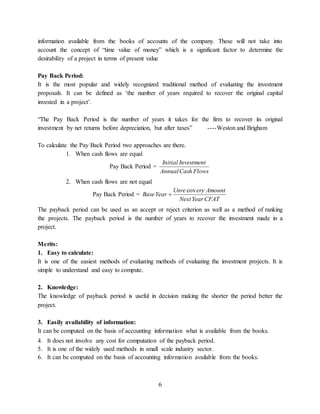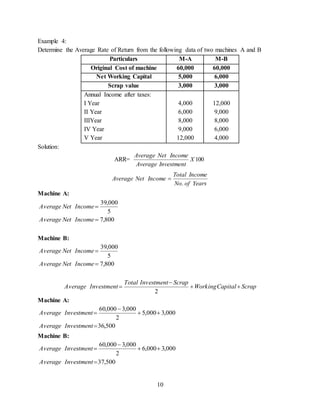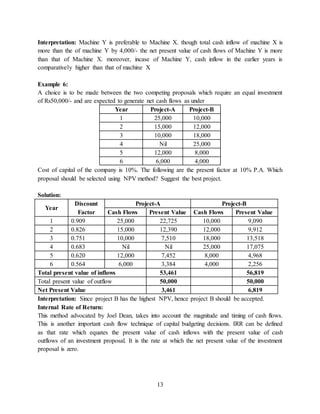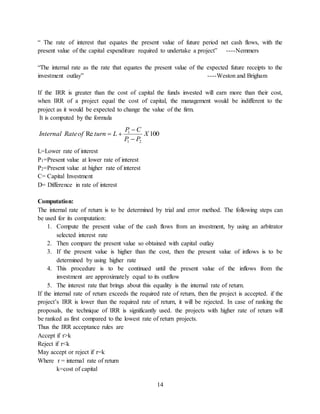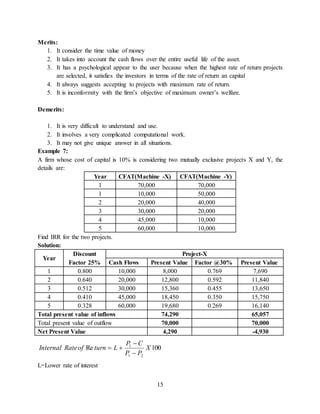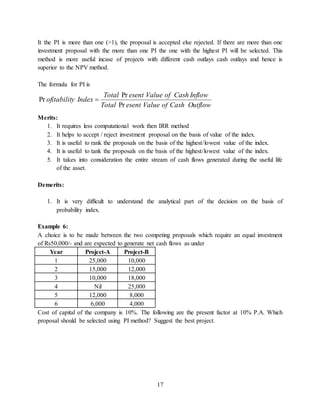The document discusses capital budgeting and various capital budgeting techniques. It begins by defining capital budgeting as the process of making long-term investment decisions regarding projects with benefits expected over several years. It then discusses various capital budgeting methods including traditional non-discounting methods like payback period and accounting rate of return as well as modern discounting methods like net present value, internal rate of return, and profitability index. Specific examples are provided to demonstrate how to use the payback period and accounting rate of return methods to evaluate investment projects.
